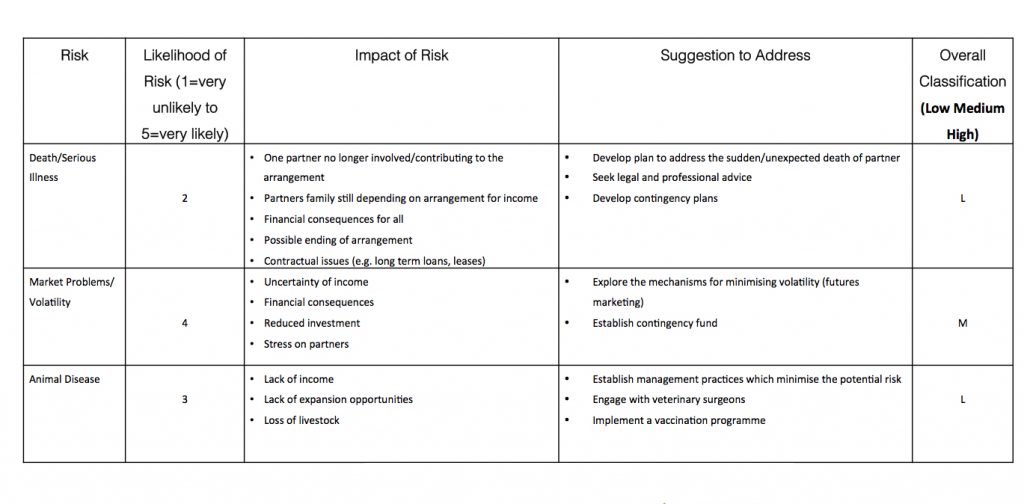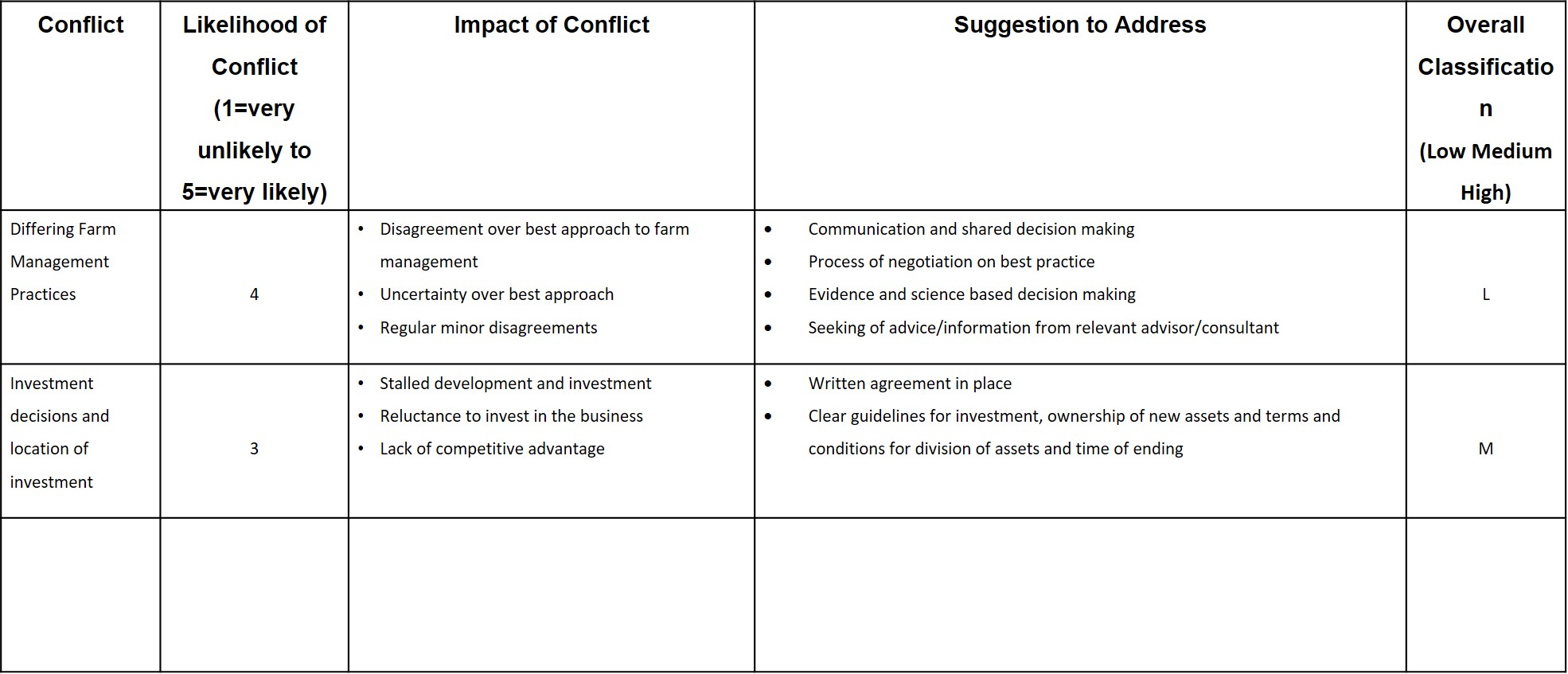

2. Preparing for Potential/Possible Conflict in Collaborative/Cooperative Arrangements
A number of areas where practical steps can be taken to address potential/possible conflict in Collaborative/Cooperative Arrangements include:
Collaborative/Cooperative arrangements need to have written agreements whether formal legal documents or not which set out the essential details for the operation and functioning of the arrangement. These agreements may be used as a reference point for the functioning of the collaborative/cooperative arrangement or at a time of conflict/potential conflict.
Some of the main areas include:
Template and example for Risk Audit (utilise this template to develop an audit checklist appropriate to specific needs)

Some of the main areas include:
Some of the main areas which could be included in a conflict audit include (continued):
Template and example for Conflict Audit (utilise this template to develop an audit checklist appropriate to specific needs)

SELF-ASSESMENT
This questionnaire will allow you to evaluate the competences acquired by studying the module.